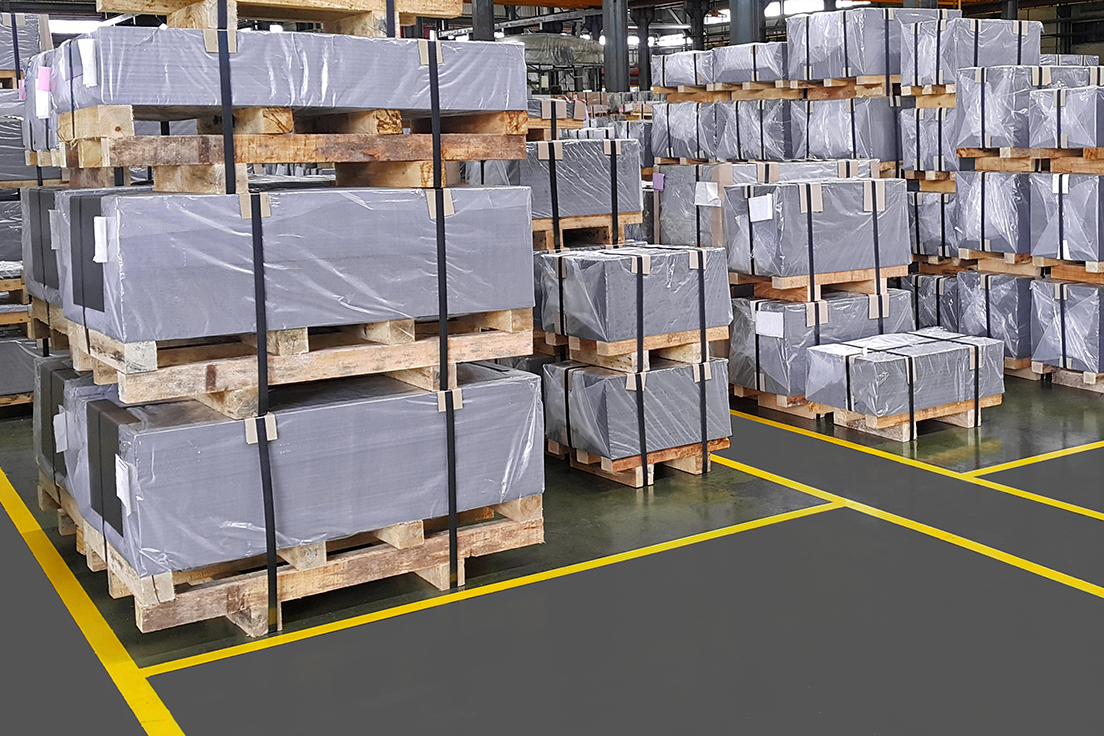Efficient Industrial Recycling Solutions for Lasting Packaging: A Comprehensive Guide
In today's increasingly environmentally-conscious globe, the need for sustainable product packaging solutions has never been greater. To fulfill this need, services throughout sectors are proactively seeking efficient commercial recycling options. Browsing the facility landscape of lasting packaging can be challenging without a detailed guide. That's where this detailed overview on reliable commercial recycling services for sustainable product packaging can be found in. By exploring key locations such as product packaging product choice, creating for recyclability, carrying out reusing facilities, working together with recycling partners, and monitoring and gauging reusing success, this guide will certainly outfit you with the expertise and tools necessary to make educated decisions and drive favorable adjustment within your organization. Whether you're a packaging professional, sustainability supervisor, or just thinking about the topic, this overview will provide valuable understandings and methods to assist you browse the globe of sustainable product packaging.
Packaging Material Choice
The choice of product packaging products plays a critical role in making sure the sustainability of commercial reusing options. When it comes to lasting product packaging, the choice of materials is type in lessening ecological effect and maximizing recycling efficiency. Selecting the right products can aid minimize waste generation, save resources, and promote a circular economy.
Products like cardboard, paper, glass, and certain kinds of plastics can be recycled several times without shedding their high quality. On the various other hand, materials that are hard to reuse, such as mixed plastics or non-recyclable compounds, can create challenges for the recycling procedure and may end up in landfills or burners.
Another consideration is using sustainable and naturally degradable products. Product packaging made from renewable energies, such as plant-based plastics or biopolymers, can assist lower dependency on nonrenewable fuel sources and minimize environment adjustment. Additionally, naturally degradable products damage down naturally with time, decreasing the buildup of waste in landfills.
Moreover, the weight and volume of product packaging materials need to be decreased to minimize transport costs and energy usage. Light-weight products not only need fewer sources throughout production however additionally add to lower carbon emissions during transport.
Creating for Recyclability
In order to make certain the recyclability of product packaging materials, thoughtful design is essential. Designing for recyclability includes creating packaging that can be easily sorted, separated, and processed in recycling facilities. One essential element of making for recyclability is the selection of products. Product packaging developers need to prioritize the use of materials that are widely approved for recycling and have established recycling frameworks. Products such as glass, light weight aluminum, and particular kinds of plastic, like pet dog and HDPE, are commonly reused and must be chosen over materials that are costly or difficult to reuse.
Another essential factor to consider in creating for recyclability is the elimination of unneeded elements or products. By lessening the number of layers, layers, and extra components, product packaging can be made simpler and less complicated to recycle. Additionally, developers should intend to decrease making use of combined products, as they can complicate the reusing process.

Implementing Recycling Framework
Efficient implementation of reusing facilities is crucial for the success of industrial reusing solutions. Without correct facilities in position, the reusing process comes to be inefficient and inefficient, impeding the total goal of sustainable product packaging.
To implement recycling framework effectively, a number of crucial factors need to be thought about. There ought to be an efficient collection system that promotes the splitting up and collection of recyclable materials. This can include assigned reusing containers in public rooms, as well as partnerships with waste management business for curbside pick-up and sorting.
Once accumulated, the recyclable materials need to be carried to reusing centers in a prompt way. This calls for reliable logistics and transport networks, making certain that the products get to the ideal centers right away.
At the reusing centers, progressed sorting and handling modern technologies need to remain in area to divide various kinds of products successfully. This consists of using automated sorting devices, optical scanners, and hands-on sorting techniques.
Additionally, there should be a my latest blog post robust market need for recycled products. This can be accomplished with cooperations with makers and markets that utilize recycled materials in their production procedures. Producing a steady market for recycled products incentivizes the reusing sector and promotes the circular economy.
Working Together With Recycling Allies

One key aspect of teaming up with recycling companions is the facility of clear communication networks. It is crucial to establish open lines of interaction to help with the exchange of information, updates, and responses. This allows both events to stay informed regarding the progress of reusing efforts and address any type of challenges or concerns that may emerge.
Furthermore, cooperation can include collaborations in applying and developing reusing programs. Recycling companions can offer beneficial insights and guidance in establishing reliable collection systems and determining the most appropriate recycling innovations. By collaborating, services and reusing companions can optimize the reusing process and lessen waste.
Moreover, cooperation can expand past the operational aspects of recycling. It can likewise incorporate campaigning for and education campaigns. By signing up with pressures, companies and reusing companions can increase recognition about the significance of recycling and advertise the adoption of lasting packaging techniques among customers and other stakeholders.
Tracking and Measuring Recycling Success
To guarantee the effectiveness of commercial reusing solutions and the achievement of sustainable packaging goals, it is critical for businesses and their recycling partners to establish an extensive system for tracking and determining recycling success (plastic container manufacturer). Gauging and tracking reusing success permits organizations to assess the impact of their reusing initiatives, recognize locations for enhancement, and established purposeful targets for future progression
One means to track reusing success is with the use of data collection and evaluation tools. By accumulating data on the quantity of product packaging waste created, the percentage of waste that is reused, and the sorts of materials being recycled, businesses can gain valuable understandings right into their recycling performance. This information can after that be examined to determine trends, patterns, and locations of inadequacy.
An additional crucial aspect of monitoring and measuring reusing success is developing clear and standardized metrics. This permits services to great site compare their efficiency versus industry standards and track their development in time. Metrics such as reusing rates, waste diversion rates, and greenhouse gas exhausts can supply a quantitative action of a company's reusing success.

Verdict
Finally, executing effective commercial recycling services for lasting packaging requires cautious consideration of product packaging material option, developing for recyclability, implementing reusing infrastructure, teaming up with recycling partners, and plastic container manufacturer monitoring and measuring reusing success. By integrating these practices, services can contribute to an extra lasting and environmentally-friendly strategy to packaging, decreasing waste and promoting the round economic situation.
By discovering key areas such as packaging product selection, creating for recyclability, implementing reusing framework, working together with reusing companions, and tracking and determining reusing success, this guide will furnish you with the knowledge and tools needed to make enlightened decisions and drive positive modification within your company. Packaging designers must focus on the usage of materials that are commonly approved for reusing and have established reusing infrastructures.Collaboration with recycling companions is important for the successful execution of commercial reusing solutions and the achievement of sustainable product packaging objectives. By signing up with pressures, businesses and recycling partners can increase understanding regarding the value of reusing and advertise the fostering of lasting product packaging techniques amongst customers and various other stakeholders.
By accumulating information on the quantity of product packaging waste created, the percent of waste that is reused, and the kinds of products being reused, organizations can obtain beneficial understandings right into their reusing efficiency.